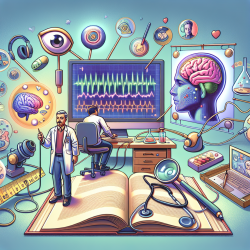Understanding Interhemispheric Plasticity in Aphasia Recovery
As a speech-language pathologist, understanding the mechanisms behind language recovery in poststroke aphasia is crucial for optimizing therapeutic outcomes. A recent study titled "Interhemispheric Plasticity following Intermittent Theta Burst Stimulation in Chronic Poststroke Aphasia" sheds light on how brain stimulation can facilitate language recovery.
Key Findings from the Research
The study explored the effects of intermittent theta burst stimulation (iTBS) on patients with chronic poststroke aphasia. The researchers applied iTBS to the residual language-responsive cortex in the left hemisphere, observing changes in brain function using functional MRI (fMRI). The key findings included:
- Leftward Shift in IFG Activity: Post-iTBS, there was an increase in left inferior frontal gyrus (IFG) activation and a decrease in right IFG activation during language tasks.
- Improved Connectivity: A reduction in right to left IFG connectivity was observed, indicating improved interhemispheric communication.
- Behavioral Correlations: A negative relationship was found between changes in right IFG activity and improvements in language fluency, suggesting that reducing right hemisphere compensation may enhance language recovery.
Implications for Practice
These findings offer valuable insights for practitioners aiming to enhance language recovery in aphasia patients:
- Consider iTBS as a Complementary Therapy: Incorporating iTBS into rehabilitation protocols may enhance the effectiveness of traditional speech therapy by facilitating neuroplastic changes.
- Focus on Left Hemisphere Activation: Strategies that promote left hemisphere engagement could be prioritized to improve language outcomes.
- Monitor Interhemispheric Dynamics: Understanding the balance between hemispheres can guide personalized therapy approaches, potentially leading to better recovery trajectories.
Encouraging Further Research
While this study provides promising results, further research is necessary to fully understand the potential of iTBS in aphasia therapy. Practitioners are encouraged to engage in research collaborations and clinical trials to explore innovative therapeutic techniques.
To read the original research paper, please follow this link: Interhemispheric Plasticity following Intermittent Theta Burst Stimulation in Chronic Poststroke Aphasia.










